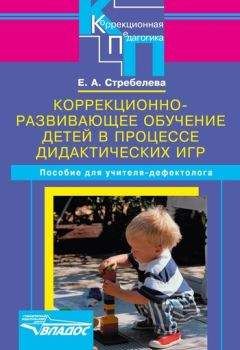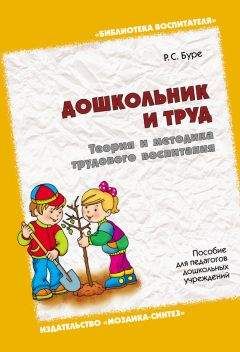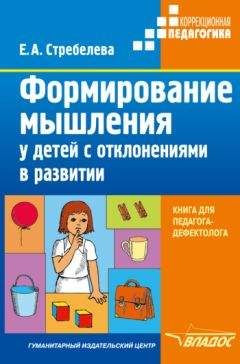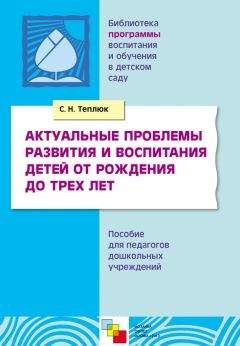Роб Найт - Смотри, что у тебя внутри. Как микробы, живущие в нашем теле, определяют наше здоровье и нашу личность
37
T. Marrs et al., “Is There an Association Between Microbial Exposure and Food Allergy? A Systematic Review,” Pediatric Allergy and Immunology: Official Publication of the European Society of Pediatric Allergy and Immunology 24, no. 4 (June 2013): 311–20 e8.
38
J. Penders et al., “Establishment of the Intestinal Microbiota and Its Role for Atopic Dermatitis in Early Childhood,” Journal of Allergy and Clinical Immunology 132, no. 3 (September 2013): 601–7 e8; K. Pyrhonen et al., “Caesarean Section and Allergic Manifestations: Insufficient Evidence of Association Found in PopulationBased Study of Children Aged 1 to 4 Years,” Acta Paediatrica 102, no. 10 (October 2013): 982–89; F. A. van Nimwegen et al., “Mode and Place of Delivery, Gastrointestinal Microbiota, and Their Influence on Asthma and Atopy,” Journal of Allergy and Clinical Immunology 128, no. 5 (November 2011): 948–55 e1–3; P. Bager, J. Wohlfahrt, and T. Westergaard, “Caesarean Delivery and Risk of Atopy and Allergic Disease: Meta-Analyses,” Clinical and Experimental Allergy: Journal of the British Society for Allergy and Clinical Immunology 38, no. 4 (April 2008): 634–42; K. Negele et al., “Mode of Delivery and Development of Atopic Disease During the First 2 Years of Life,” Pediatric Allergy and Immunology: Official Publication of the European Society of Pediatric Allergy and Immunology 15, no. 1 (February 2004): 48–54.
39
M. B. Azad et al., “Gut Microbiota of Healthy Canadian Infants: Profiles by Mode of Delivery and Infant Diet at 4 Months,” CMAJ: Canadian Medical Association Journal 185, no. 5 (March 19, 2013): 385–94.
40
J. E. Koenig et al., “Succession of Microbial Consortia in the Developing Infant Gut Microbiome,” supplement 1, Proceedings of the National Academy of Sciences of the United States of America 108 (March 15, 2011): 4578–85.
41
G. D. Wu et al., “Linking Longterm Dietary Patterns with Gut Microbial Enterotypes,” Science 334, no. 6052 (October 7, 2011): 105–8.
42
G. D. Wu et al., “Linking Longterm Dietary Patterns with Gut Microbial Enterotypes,” Science 334, no. 6052 (October 7, 2011): 105–8.
43
J. Qin et al., “A Human Gut Microbial Gene Catalogue Established by Metagenomic Sequencing,” Nature 464, no. 7285 (March 4, 2010): 59–65.
44
T. Yatsunenko et al., “Human Gut Microbiome Viewed Across Age and Geography,” Nature 486, no. 7402 (May 9, 2012): 222–7.
45
J. H. Hehemann et al., “Transfer of Carbohydrate-Active Enzymes from Marine Bacteria to Japanese Gut Microbiota,” Nature 464, no. 7290 (April 8, 2010): 908–12.
46
P. J. Turnbaugh et al., “A Core Gut Microbiome in Obese and Lean Twins,” Nature 457, no. 7228 (Jan. 22, 2009): 480–4.
47
J. Genuneit et al., “The Combined Effects of Family Size and Farm Exposure on Childhood Hay Fever and Atopy,” Pediatric Allergy and Immunology: Official Publication of the European Society of Pediatric Allergy and Immunology 24, no. 3 (May 2013): 293–98.
48
S. J. Song et al., “Cohabiting Family Members Share Microbiota with One Another and with Their Dogs,” eLife 2 (April 16, 2013): e00458.
49
J. G. Caporaso et al., “Moving Pictures of the Human Microbiome,” Genome Biology 12, no. 5 (2011): R50.
50
M. J. Claesson et al., “Gut Microbiota Composition Correlates with Diet and Health in the Elderly,” Nature 488, no. 7410 (August 9, 2012): 178–84.
51
P. J. Turnbaugh et al., “DietInduced Obesity Is Linked to Marked but Reversible Alterations in the Mouse Distal Gut Microbiome,” Cell Host & Microbe 3, no. 4 (April 17, 2008): 213–23.
52
M. Vijay-Kumar et al., “Metabolic Syndrome and Altered Gut Microbiota in Mice Lacking Toll-like Receptor 5,” Science 328, no. 5975 (April 9, 2010): 228–31.
53
Ridaura et al., “Gut Microbiota from Twins Discordant for Obesity Modulate Metabolism in Mice.”
54
D. Mozaffarian et al., “Changes in Diet and Lifestyle and Long-term Weight Gain in Women and Men,” New England Journal of Medicine 364, no. 25 (June 23, 2011): 2392–404.
55
L. A. David et al., “Diet Rapidly and Reproducibly Alters the Human Gut Microbiome,” Nature 505, no. 7484 (January 23, 2014): 559–63.
56
D. P. Strachan, “Hay Fever, Hygiene, and Household Size,” British Medical Journal 299, no. 6710 (Nov. 18, 1989): 1259–60.
57
D. P. Strachan, “Is Allergic Disease Programmed in Early Life?”, Clinical & Experimental Allergy 24, no. 7 (July 1994): 603–5.
58
J. Riedler et al., “Exposure to Farming in Early Life and Development of Asthma and Allergy: A Cross-Sectional Study,” The Lancet 358, no. 9288 (Oct. 6, 2001): 1129–33.
59
S. Illi et al., “Protection from Childhood Asthma and Allergy in Alpine Farm Environments – the GABRIEL Advanced Studies,” Journal of Allergy and Clinical Immunology 129, no. 6 (June 2012): 1470–7.
60
Braun-Fahrländer et al., “Environmental Exposure to Endotoxin and Its Relation to Asthma in School-Age Children,” New England Journal of Medicine 347, no. 12 (Sept. 19, 2002): 869–77.
61
J. Douwes et al., “Does Early Indoor Microbial Exposure Reduce the Risk of Asthma? The Prevention and Incidence of Asthma and Mite Allergy Birth Cohort Study,” Journal of Allergy and Clinical Immunology 117, no. 5 (May 2006): 1067–73.
62
S. Lau et al., “Early Exposure to House-Dust Mite and Cat Allergens and Development of Childhood Asthma: a Cohort Study. Multicenter Allergy Study Group,” The Lancet 356, no. 9239 (Oct. 21, 2000): 1392–7.
63
M. J. Ege et al., “Exposure to Environmental Microorganisms and Childhood Asthma,” New England Journal of Medicine 364, no. 8 (Feb. 24, 2011): 701–9.
64
E. Y. Hsiao et al., “Microbiota Modulate Behavioral and Physiological Abnormalities Associated With Neurodevelopmental Disorders,” Cell 155, no. 7 (Dec. 19, 2013): 1451–63.
65
N. Elazab et al., “Probiotic Administration in Early Life, Atopy, and Asthma: a Meta-Analysis of Clinical Trials,” Pediatrics 132, no. 3 (Sept. 2013): 666–76.
66
A. A. Niccoli et al., “Preliminary Results on Clinical Effects of Probiotic Lactobacillus Salivarius LS01 in Children Affected by Atopic Dermatitis,” Journal of Clinical Gastroenterology 48, supplement 1 (Nov-Dec 2014): S34–6.
67
M. C. Arrieta and B. Finlay, “The Intestinal Microbiota and Allergic Asthma,” Journal of Infection 4453, no. 14 (Sept. 25, 2014): 227–8.
68
A. Du Toit, “Microbiome: Clostridia Spp. Combat Food Allergy in Mice,” National Review of Microbiology 12, no. 10 (Sept. 16, 2014): 657.
69
A. T. Stefka et al., “Commensal Bacteria Protect Against Food Allergen Sensitization,” Proceedings of the National Academy of Sciences 111, no. 36 (Sept. 9, 2014): 13145–50.
70
M. Noval Rivas et al., “A Microbiota Signature Associated With Experimental Food Allergy Promotes Allergic Sensitization and Anaphylaxis,” Journal of Allergy and Clinical Immunology 131, no. 1 (Jan. 2013): 201–12.
71
M. S. Kramer et al., “Promotion of Breastfeeding Intervention Trial (PROBIT): a ClusterRandomized Trial in the Republic of Belarus. Design, Follow-Up, and Data Validation,” Advances in Experimental Medicine and Biology 478 (2000): 327–45.
72
H. Kronborg et al., “Effect of Early Postnatal Breastfeeding Support: a Cluster-Randomized Community Based Trial,” Acta Pediatrica 96, no. 7 (July 2007): 1064–70.
73
I. Hanski et al., “Environmental Biodiversity, Human Microbiota, and Allergy Are Interrelated,” Proceedings of the National Academy of Sciences 109, no. 21 (May 22, 2012): 8334–9.
74
C. G. Carson, “Risk Factors for Developing Atopic Dermatitis,” Danish Medical Journal 60, no. 7 (July 2013): B4687.
75
E. von Mutius et al., “The PASTURE Project: E. U. Support for the Improvement of Knowledge About Risk Factors and Preventive Factors for Atopy in Europe,” Allergy 61, no. 4 (April 2006): 407–13.
76
S. J. Song et al., “Cohabiting Family Members Share Microbiota With One Another and With Their Dogs,” eLife 2 (April 16, 2013).
77
B. Brunekreef et al., “Exposure to Cats and Dogs, and Symptoms of Asthma, Rhinoconjunctivitis, and Eczema,” Epidemiology 23, no. 5 (Sept. 2012): 742–50.
78
I. Trehan et al., “Antibiotics as Part of the Management of Severe Acute Malnutrition,” New England Journal of Medicine 368, no. 5 (January 31, 2013): 425–35.
79
M. I. Smith et al., “Gut Microbiomes of Malawian Twin Pairs Discordant for Kwashiorkor,” Science 339, no. 6119 (February 1, 2013): 548–54.
80
Turnbaugh et al., “Core Gut Microbiome in Obese and Lean Twins.”
81
D. N. Frank et al., “MolecularPhylogenetic Characterization of Microbial Community Imbalances in Human Inflammatory Bowel Diseases,” Proceedings of the National Academy of Sciences of the United States of America 104, no. 34 (August 21, 2007): 13780–85; M. Tong et al., “A Modular Organization of the Human Intestinal Mucosal Microbiota and Its Association with Inflammatory Bowel Disease,” PloS One 8, no. 11 (November 19, 2013): e80702.
82
J. U. Scher et al., “Expansion of Intestinal Prevotella Copri Correlates with Enhanced Susceptibility to Arthritis,” eLife 2 (November 5, 2013): e01202.
83
P. Bercik, “The MicrobiotaGut-Brain Axis: Learning from Intestinal Bacteria?”, Gut 60, no. 3 (March 2011): 288–89.
84
J. F. Cryan and S. M. O’Mahony, “The Microbiome-Gut-Brain Axis: From Bowel to Behavior,” Neurogastroenterology and Motility: The Official Journal of the European Gastrointestinal Motility Society 23, no. 3 (March 2011): 187–92.
85
A. Naseribafrouei et al., “Correlation Between the Human Fecal Microbiota and Depression,” Neurogastroenterology and Motility: The Official Journal of the European Gastrointestinal Motility Society 26, no. 8 (August 2014): 1155–62.
86
G. A. Rook, C. L. Raison, and C. A. Lowry, “Microbiota, Immunoregulatory Old Friends and Psychiatric Disorders,” Advances in Experimental Medicine and Biology 817 (2014): 319–56.
87
D. W. Kang et al., “Reduced Incidence of Prevotella and Other Fermenters in Intestinal Microflora of Autistic Children,” PLoS One 8, no. 7 (2013): e68322.
88
Hsiao et al., “Microbiota Modulate Behavioral and Physiological Abnormalities Associated with Neurodevelopmental Disorders.”
89
Vijay-Kumar et al., “Metabolic Syndrome and Altered Gut Microbiota in Mice Lacking Tolllike Receptor 5.”
90
P. Bercik et al., “The Intestinal Microbiota Affect Central Levels of Brain-Derived Neurotropic Factor and Behavior in Mice,” Gastroenterology 141, no. 2 (August 2011): 599–609, 609 e1–3.




